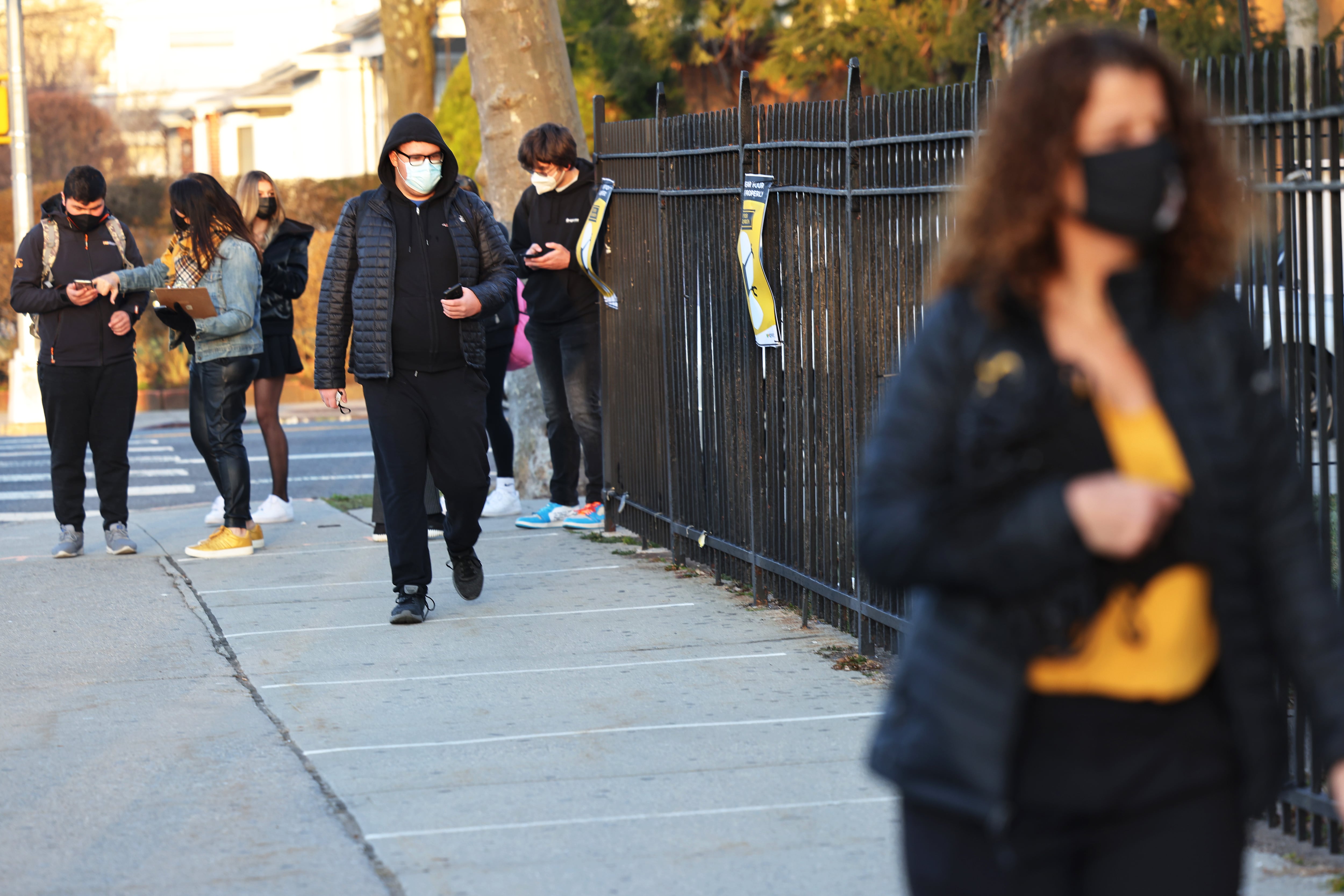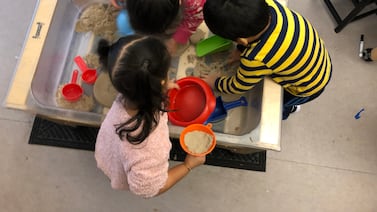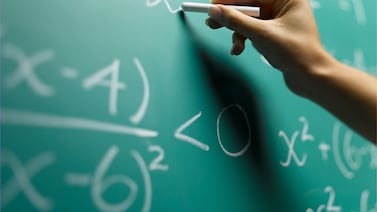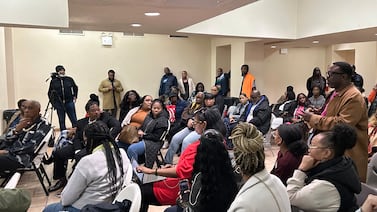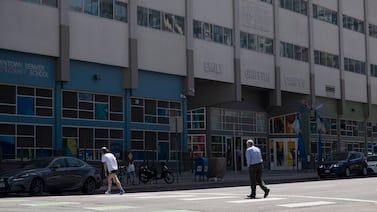It’s not an easy time to be an eighth grader in New York City.
Across the five boroughs, 12- and 13-year-olds are in the midst of high school admissions season with newly changed rules that sort kids into different “groups” based on their grades from last year.
New York City has more than 400 public high schools with 700 programs. Roughly 120 of these use “screens,” such as grades, essays or exams. Twenty-five high schools require auditions. Eight base admissions solely on the Specialized High School Admissions Test, or SHSAT. Given this landscape, New York City is home to more schools that screen students based on academic performance than other large school districts nationwide.
Schools Chancellor David Banks defended the city’s system of stratifying students when he announced changes to this year’s admissions process, saying, “if a young person is working their tail off every single day and they get a 99% average … that should be honored … you should not be thrown in a lottery with just everybody.”
The system concentrates lower-performing students on the same campuses and contributes to the city’s status as one of the most racially segregated school systems in the country. This year’s admissions process will likely reverse some of the pandemic-era diversity gains when competitive schools couldn’t rely as heavily on grades and other screening measures.
The changes for many families, especially those who may now be shut out of selective schools, has brought a wave of anxiety as they begin the process of ranking up to 12 choices on their applications.
“Anxiety is extra high because, once again, there are changes to the application process,” said Mahalia Watson, founder of the Let’s Talk Schools online parent guide. “I tell everyone to be sure to choose 12 schools that they would be OK attending and chances are more than likely that they will be fine. I don’t agree that the specialized high school or a few select screened schools are the only good options available … Focus on selecting a school that is a good fit for your student and not whether it’s a ‘good school’ or not.”
Other advice she gives parents: “Don’t try to outsmart the matching system. Only select schools that you would attend if an offer of admission is given.”
What else you need to know:
What are the important deadlines?
Applications are due by Dec. 1, and you can apply online through your child’s MySchools account.
Submitting your application early doesn’t give you any advantage, but many experts advise against waiting until the last minute.
“Start early. Don’t wait until the last minute to select schools,” Watson said. “There are so many that it can get overwhelming so the more time you can devote to the process, the less difficult or confusing it will be.”
Eighth grade families should have received a letter from the education department with a code to create a MySchools account, if they didn’t already have one. (Students not currently enrolled in New York City public schools can visit the education department’s website with instructions for new students.)
Offers are expected in early March.
What about the specialized high schools?
There’s a separate process for eight specialized high schools that require a test for admission, like Stuyvesant and Brooklyn Tech. You must register for the SHSAT — again, though MySchools — by Nov. 4. Eighth graders attending the city’s public middle schools will take the exam at their respective schools on Nov. 17. Other students — at charter schools, private schools, home-schooled or at public schools with grades 6-12 — will take the exam at specific locations on Nov. 19, Nov. 20, or Dec. 11.
Last year, roughly 28,000 students took the test, and about 4,000 received offers. Basing admission on a single test has long been controversial because of the dearth of Black and Latino students who score high enough to get seats: Just 9% of the offers based on the test went to Black and Latino students despite making up about 66% of students citywide.
The specialized schools also enroll relatively few English language learners or students with disabilities. Children with testing accommodations giving them double time — which could be more than 6 hours — should talk to their schools about the possibility of multi-day testing, suggested Jenn Choi, who runs Special Support Services, which advises parents of students with disabilities.
Another specialized high school, Fiorello H. LaGuardia High School of Music & Art and Performing Arts, uses auditions or portfolios for entry instead of the SHSAT, and requires a separate application via MySchools. There’s a common application for the 25 schools that require auditions, which means, for example, if you apply to three dance programs, you only need to send in one dance audition. A student’s lottery number will break a tie if students have the same rank, education department officials said.
Offers to these schools are given at the same time as other schools in early March.
How should you research schools?
After logging into your MySchools account, you can search for schools and research their information pages, which should include any tours (virtual or in person) as well as additional admissions requirements or selective criteria. Other helpful resources include InsideSchools, which offers write ups based on school visits along with other helpful data points, including results of school surveys on questions like bullying and safety.
“Make sure you are finding schools that are good fits for your child in terms of academics, rigor, interests, and teaching styles,” said Elissa Stein, a consultant who runs the HS 411 subscription service. “Consider quality of life issues like commute, start time, out[side] lunch, extracurriculars, and freshman support.”
After viewing so many options they might start to blend together, so it’s important to take notes, Stein suggested. Also, she advises families to involve their eighth graders in the process, “whether it’s doing post-touring recaps, having them research in MySchools, or spending time talking through options.”
Additionally, double check that your child is eligible for the programs and schools you’re considering, she said.
Watson advises families to visit as many schools as possible through virtual and in-person tours, and she was excited for the open house calendar on MySchools.
“In addition to visiting, the best way to find out information about a school is to speak to parents and/or students already enrolled,” Watson added.
What’s up with the new grouping process?
The city recently announced that this year’s eighth grade students will get priority to screened schools based on their seventh grade scores for coursework in core subjects. (State test scores are not factored in.) Students are grouped as follows:
- Group 1: Those with final seventh grade course grades with an average of at least 94.33 qualify for the citywide threshold, as do students who are in the top 15% of their school, with an average of at least 90.
- Group 2: Those with an average of at least a 90.25 average qualify for the citywide threshold (if they’re not in Group 1), as do those in the top 30% of their school with an average of at least 80.
- Group 3: Those with an 83.5 average qualify for the citywide threshold, along with those in the top 50% of their school with an average of at least 75.
- Group 4: Those with a 76.75 average qualify for the citywide threshold, along with those with seventh grade course grades in the top 70% of their school with an average at least 65.
- All others will be in Group 5.
Applicants can find out which group they fall into through their MySchools profile. (Click on “edit profile” above your child’s name and scroll down to find the admissions group.)
If there are more applicants in Group 1 than available seats, students from that group will be selected by a lottery using the random number linked to each person’s application, according to education department officials. If seats are not all taken by Group 1 applicants, students from Group 2 are considered in the same way, and so on.
About 20 of the city’s selective high schools, including Beacon and Bard Early College high schools, require students to complete essays, school-based exams, or other assessments.
What about schools that are part of the city’s Diversity in Admissions program?
More than 40 high school programs set aside a certain percentage of their seats for students from low-income families or in temporary housing, for instance.
If students from Group 1 who meet those admissions criteria don’t fill all the available seats set aside for them, those seats will then go to “Diversity in Admissions” applicants in the next group, education officials said. For instance, Frank McCourt High School, Beacon, and Millennium Brooklyn High Schools give priority to students eligible for free or reduced price lunch for 66% of their seats.
What about students with disabilities?
When it comes to the enrollment process, students with disabilities who have individualized education programs, or IEPs, are considered in a separate pool if they have a special education service — either a special class, special education teacher support services, or SETSS, or integrated co-teaching, or ICT — for 20% of their week.
But not all high schools are inclusive when it comes to students with disabilities, said Choi, of Special Support Services, who trains parents how to research a school’s special education culture.
Like many parts of the city’s school system, for children with disabilities the onus falls on the family to figure things out.
“If you think about how fast a family can find out which schools have golf teams in New York City, it’s literally less than a minute,” Choi said. “We have to call to find out what ‘partial accessibility’ even means. That’s another fifty phone calls.”
Families should ask, for instance, how a school flags when a student is not making appropriate progress and what happens next? Is there a conference or tutoring?
“Is the student’s entire curriculum on Google classroom? With reminders, reading material, worksheets, due dates, assignment information, and powerpoints?” she asked. “For many students with disabilities, it’s an essential accessibility need and for others, it’s just a desired good practice.”
What does your random number mean?
This year, for the first time the city is sharing students’ lottery numbers in their MySchools account profile. These hexadecimal random numbers may be hard to decipher — though that hasn’t stopped some from trying. For schools that have various admissions priorities, these numbers act as “tie breakers,” Joyce Szuflita, who runs NY Schools Help, explained on her blog. Someone with a lower random number in Group 1 still would be ranked higher than someone in Group 2 with a “good” lottery number, she explained.
Szuflita advises families to look at an array of schools, and understand your odds based on admissions priority to specific groups of applicants before others, such as to students who live in a specific borough, or continuing middle schoolers in a 6-12 grade school, or for Diversity in Admissions students, or students with certain grades for screened schools.
“Make a robust list of different kinds of schools, with different sizes, with different admission criteria, with different [applicant to seat] ratios, with different priorities,” she wrote. “The random numbers are a factor, but they are not your fate. Then rank your list in true preference order.”
Amy Zimmer is the bureau chief for Chalkbeat New York. Contact Amy at azimmer@chalkbeat.org.

